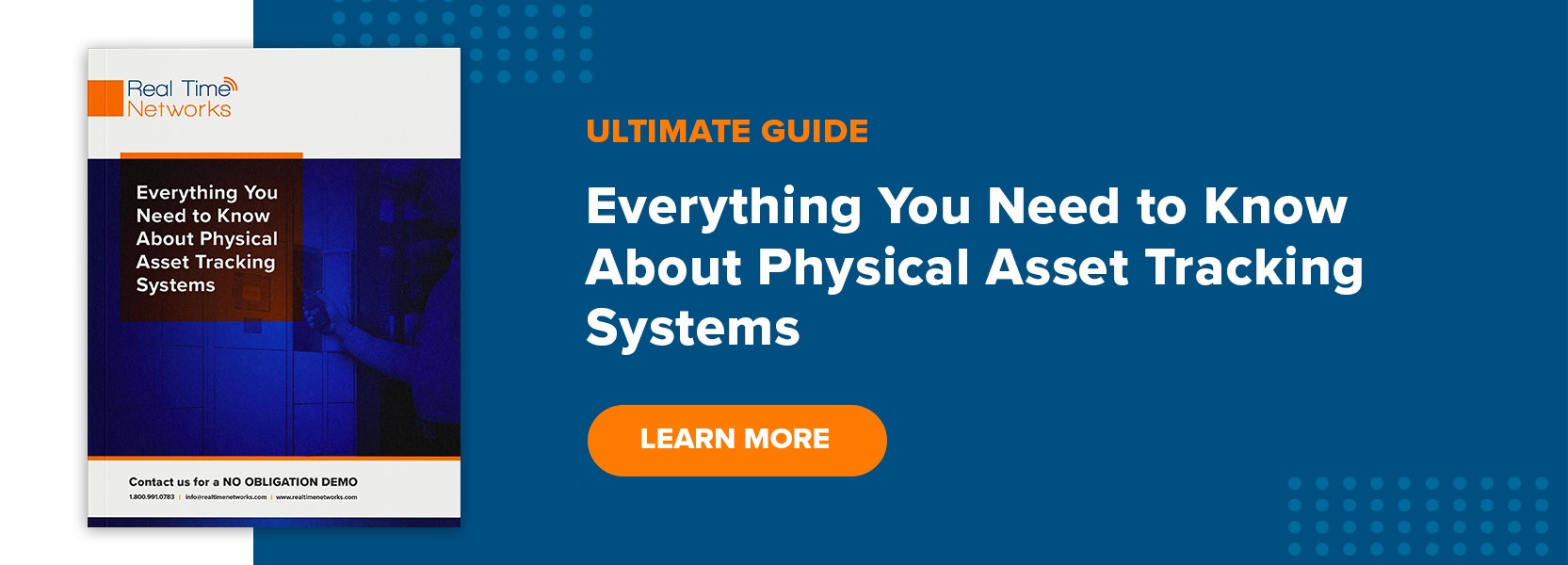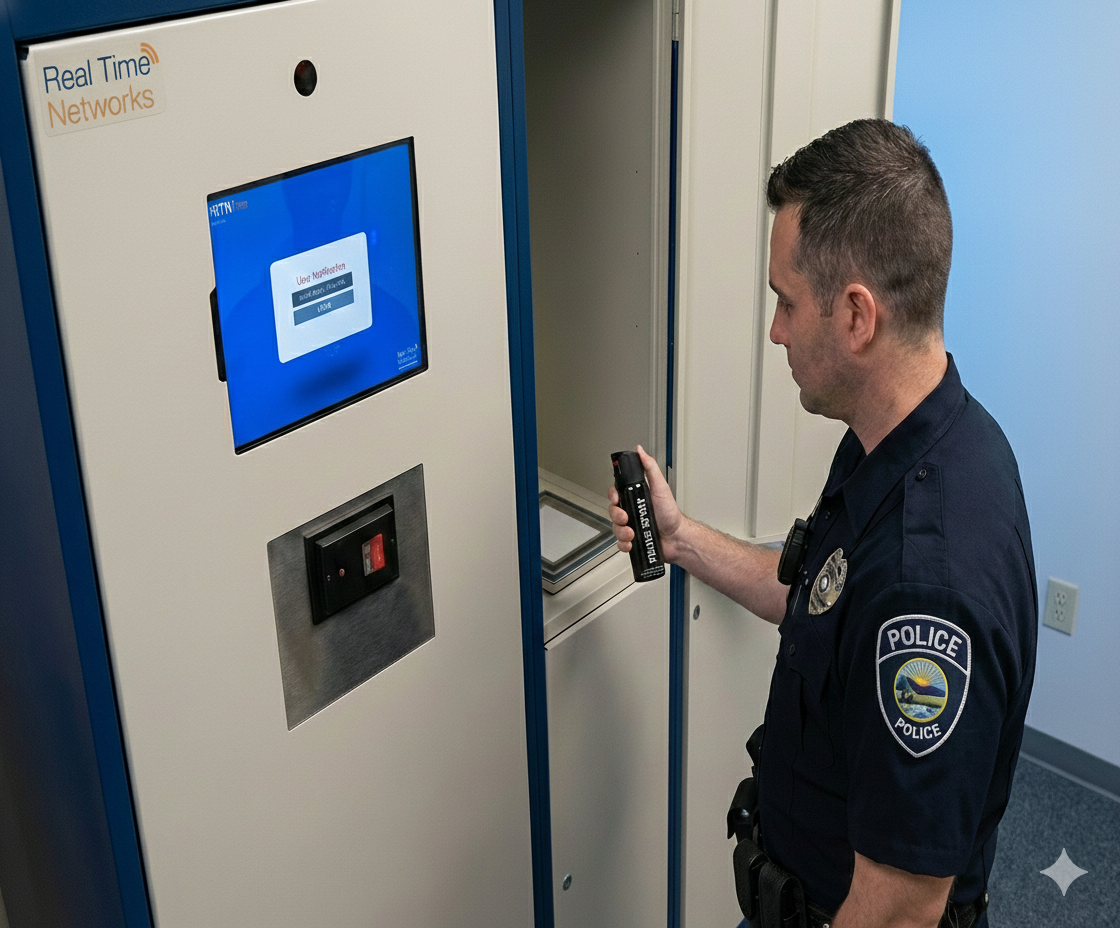By Jay Palter | June 1, 2021
Many businesses are trying to find ways to bring the benefits of GPS tracking indoors into their workplaces. They want to get that same kind of location and movement data on their people and valuable assets. Many of these businesses opt to use an indoor positioning system (IPS).
You may be asking yourself, isn’t an indoor positioning system just like GPS? Can’t we just use GPS instead? Unfortunately, it isn’t that simple. In this article, we’ll explain why IPS is the necessary choice indoors, the unique benefits of IPS, and how you can use IPS for asset tracking in different business sectors.
Can you get a GPS signal indoors?
Technically yes, you can get a GPS signal indoors in some settings. But in most cases, signals indoors are too weak to be of any value. That’s because GPS was designed for a very different use case.
How Does GPS Work?
The U.S. government developed the Global Positioning System in the late 1970s as a navigational aid for military aircraft. Limited civilian use of GPS began in the mid-1980s. The current, accurate GPS service we use today became available in 2000.
GPS works on the mathematical idea of “true-range multilateration.” Put simply, a GPS-enabled device, such as a smartphone, locks onto signals from three of the 31 GPS satellites currently in orbit, which allows the device to calculate its precise location on Earth. The exact details of multilateration aren’t important here, but the U.S. government does provide some detailed information on how GPS works for those interested.
The key takeaway is that GPS relies on a device receiving three or more relatively weak satellite signals, and those signals just can’t penetrate buildings well. Researchers are actively trying to develop indoor GPS tools, but to date, most proposals haven’t gotten past the concept stage.
What’s the alternative?
For worksite asset tracking, the best alternative is to use an indoor positioning system. An IPS asset tracking system requires three components:
- Wireless tracking tags
- Receivers
- Management system
We’ve previously discussed the various wireless standards in use today, but since we’re comparing IPS to GPS, let us think about them differently. IPS standards can be grouped into three different categories based on how they work.
1. Presence-Based IPS
Presence-based indoor positioning systems track locations by identifying when a tag is close to a receiver. These systems are usually low-power and cost-effective, but they can’t provide asset tracking at ranges of more than a few meters by design.
The most popular presence-based IPS wireless standards are:
- Passive radio frequency identification (RFID)
- Bluetooth
- Infrared (IR)
2. Time-Based
Time-based positioning systems work by measuring how long it takes a signal to travel between a tag and receiver. A system can identify a tag’s location by combining measurements from two, three, or more receivers in an IPS network. That is the basic principle upon which GPS works as well: multilateralism.
Time-based IPS systems tend to be highly accurate at range. These systems also tend to be more expensive than their low-power presence-based counterparts.
The most popular time-based standards are:
- Active RFID
- Ultra-wideband (UWB)
- Ultrasonic
3. Proximity-Based
Proximity-based systems measure the strength of the signal they receive. Usually, radio wave signals are used instead of sound or other EM signals because those are less prone to interference in most worksites.
Wi-Fi indoor positioning is currently the most popular proximity-based standard. It relies on a combination of time-based and proximity-based trilateration to work.
So Is a Presence-, Time-, or Proximity-Based IPS the Best Choice?
As with many things, the real answer is, “It depends.” The best option for you largely depends on your business priorities and the layout of your facility. Your critical consideration is likely the level of precision required to achieve your asset tracking objectives within your particular facility.
For example:
- Do you only require room-level precision and want a low price point? Then IR tracking might be sufficient.
- Do you want assets verified as users sign them in or out of a storage system? Passive RFID is an excellent choice.
- Do you need high-precision location-based data, and cost is no object? A UWB IPS might meet your needs.
How can you use IPS for corporate asset tracking?
One of the most popular uses for indoor positioning systems is tracking corporate assets. If you’re investigating how to get a GPS signal indoors for asset tracking, then an IPS offers all of the advantages you’re looking for.
Tracking Asset Location
An IPS allows you to identify the exact location of a tagged asset in real time. You can watch equipment, vehicles, or even people move around your worksite. Asset management systems can also authenticate devices as users sign them in or out of a storage system for added accountability using in-place IPS called content surveillance.
Gathering Insights into Equipment Use and Performance
Tracking data logged over time can be used to generate insightful reports on how your equipment is used. Over the previous month, were handheld scanners underutilized at one warehouse but overutilized at another? Reallocate devices to keep everyone working efficiently.
Monitoring Warranties
You can tie tracking tags to detailed equipment inventories in your management system. The system can email supervisors a warning when an expiration date is approaching. A tracking system can also prevent users from signing out devices when they’re out of warranty.
Informing Purchasing Decisions
Because asset tracking systems log both maintenance and usage, you will be able to calculate total cost of ownership figures for all tracked equipment. You can identify which brands provide the most value over their lifecycle and which ones you might want to consider dropping when you refresh your inventory.
Supporting Better Maintenance and Replacement Decisions
Tracking can also reveal which devices require the most servicing. Are devices from brand A breaking twice as much as brand B? Does brand C break at a moderate rate but cost far less to fix?
Tracking systems themselves can simplify your repair processes. Users can flag a device in need of servicing at sign-out or return. The tracking system can lock down the device and notify technicians that it’s ready for pickup from a specially designated maintenance locker.
In what sectors is IPS asset tracking useful?
Most indoor positioning systems require a degree of customization to operate effectively in a particular workplace. There are many things you do or don’t want to do when selecting an asset tracking solution for your organization, but IPS asset tracking has use cases in a wide range of sectors.
Healthcare
IPS asset tracking helps medical centers improve their quality of care. They help them know which nurses or technicians signed out which devices. Medical centers can track personnel and vital medical equipment live on the floor.
Law Enforcement & Emergency Services
Police gear, firearms, medkits, and many other types of equipment all require comprehensive management. Many of these assets fall under federal reporting requirements as well. IPS asset tracking can verify where these items are, show who signed them out, and generate detailed reports for compliance.
Education
Educational institutes can use IPS asset tracking to keep tabs on expensive electronic devices and other equipment. Many asset management systems also include charging ports for these devices in their storage lockers. That helps ensure devices are always ready when students or instructors need them.
Hospitality
Many hotels and resorts now frequently provision tablets to their staff to improve process control. If they host conferences, they also likely have IT and AV equipment that they need to manage. IPS tracking helps reduce theft and ensure your service staff can always locate AV equipment for better guest service.
Manufacturing
Asset tracking helps manufacturing businesses locate and organize all of their key pieces of equipment. The management system can rotate sign-outs across the entire inventory pool, so wear and tear is evenly distributed.
If a device isn’t returned on time, the system can issue an alert to a supervisor. That supervisor can start an immediate search, track down the staff member who signed the device out, and hopefully recover it before the device is permanently lost.
IPS is the answer for corporate asset tracking.
GPS is the clear best choice for outdoor positioning, but since you can’t reliably get a GPS signal indoors, an IPS solution is the correct one for indoor asset tracking. No matter which business sector you’re in, there is an IPS solution out there that is right for you.
Do you want to learn how to integrate an IPS into your company’s security and safety program? Then check out our guide, Physical Security 101: How to Start Building a World-Class Security Program.
Subscribe to our blog

Jay Palter
Vice President of Marketing & Partnerships






